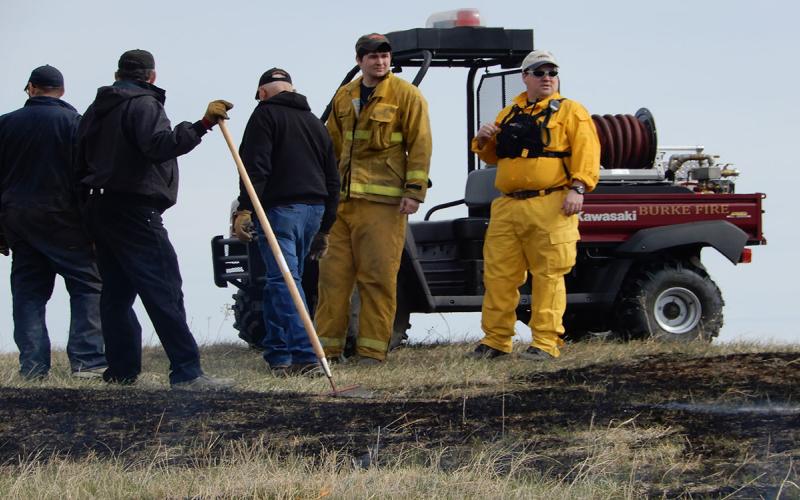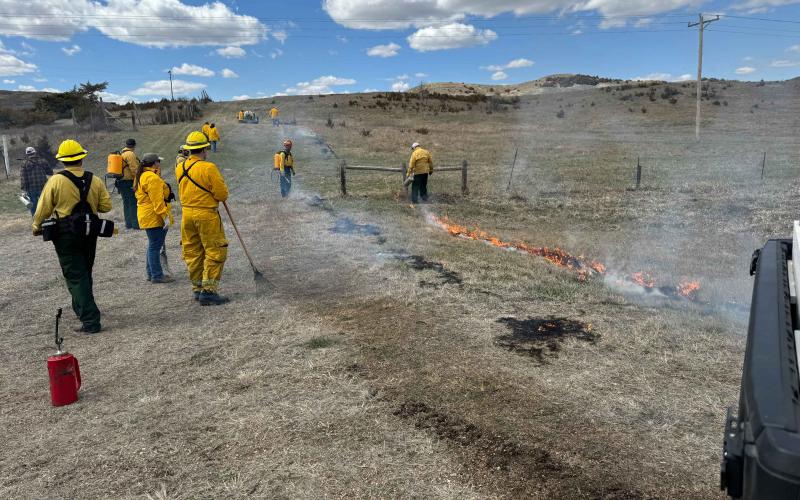Developed with contributions by John McMaine, former Griffith Endowed Assistant Professor & SDSU Extension Water Management Engineer.
2025 Series
Our yards are places that we go to play, relax, and spend time outdoors with friends and family. But we’re not the only ones who can benefit from a healthy outdoor environment. We can create outdoor spaces that are beautiful and beneficial using practices that improve the soil, conserve water, and provide habitat for pollinators, birds, and wildlife, so that our yards can become sanctuaries not only for us, but for the abundance of life around us. Back this year, the Backyard Natural Resources webinar series provides homeowners with practical information on how to support and improve those elements in our yards and gardens.
In the first episode of this series, Chris Goldade of the South Dakota Soil Health Coalition talks about how to incorporate soil health practices into our yards and gardens. These practices include reducing tillage or using no-till methods, keeping the soil covered using mulch or cover crops, having living roots in the ground as long as possible, planting a wide variety of plants, including plants for pollinators, and integrating animals into the garden depending on space and location, or by using animal manure as a soil amendment. Chris also talked about the basics of composting and how to start composting your food scraps and garden waste to create nutrient rich compost you can use in your yard or garden.
In the second episode of the 2025 series, Robin Buterbaugh, SDSU Extension Horticulture Field Specialist, talks about the different methods you can use on your property to conserve water and harvest rainwater from rooftops or other hard surfaces. Good water-wise design practices like using mulch, no-till, polyculture, and good crop selection help conserve water and decrease the amount of water needed for irrigation. Water harvesting systems like rain gardens and rain barrels also decrease water for irrigation while also reducing stormwater volume and improving water quality before it leaves your property and travels into the surrounding rivers and wetlands.
In episode three of this series, Amanda Bachmann, SDSU Extension Urban Entomology Field Specialist, discussed how to be a backyard detective to solve pest problems in the garden, while still supporting beneficial insects. Gardens are diverse ecosystems with lots of plants, and also the potential for lots of pests. This presentation covers how to be a sleuth in your garden to solve pest problems. Strategies covered include pest monitoring techniques, identification resources, types of management options, recordkeeping, and reevaluation. Dr. Bachmann also shared pictures of common garden residents, both pests and beneficial insects.
In the last episode of our 2025 Backyard Natural Resources series, Laura Edwards, SDSU Extension State Climatologist gives an update on the climate outlook for spring and summer. Dr. Kristine Lang, SDSU Consumer Horticulture State Specialist provides pointers for preparing your garden for a drought early in the season. Some of these techniques include planting less within a bed to reduce water needs, adding mulch to prevent evaporation, using drip irrigation to water the ground and not the plants, planting drought tolerant varieties, and pruning back cool season flowers and starting seeds for a fall crop of plants like lettuce and brassicas. Below are resources that can help you prepare and prevent issues in the garden when we face a hot, dry summer:
- Options for Watering Home Gardens and Landscape Plantings
- Organic Garden Mulches To Conserve Moisture and Prevent Weeds
- Enjoy More Flowers in Your Garden by Deadheading Regularly
- Vegetable Gardening During a Drought
- Leaf Scorch and Sunscald in the Garden
- Herbicide Damage to Fruits and Vegetables
- Cool-Season Flowering Annuals for the Garden
2024 Series
When we think of caring for and conserving natural resources, such as soil, water, plants, and other insects and animals, we don’t always think about things we can do in our own backyards. In this four-part SDSU Extension webinar series, you can learn about ways to improve your soil; conserve water; celebrate our prairie heritage; and support insect, plant, and wildlife to support healthy ecosystems in your backyard and beyond.
Soil is a living ecosystem that regulates water, sustains plant and animal life, filters and buffers pollutants, cycles nutrients, and provides physical stability and support for plants and human activity. In the first video of the series, SDSU Extension Soil Health Field Specialist Anthony Bly talks about how the principles of soil health that are commonly recommended for larger-scale agriculture can also be used to improve soil health in our backyards. These principles are to keep the soil covered as much as possible, minimize soil disturbance, keep living roots in the soil as long as possible, and maximize plant variety. Using these practices can maintain and improve our soil’s water infiltration, organic matter content, and nutrient cycling ability, all of which help our yards and gardens become healthier and more productive.
Rainwater falling on impervious surfaces in our communities contributes to stormwater runoff that flows into our surrounding rivers and wetlands.
That said, there are many things that homeowners can do to decrease the amount of stormwater and improve water quality before it leaves your property.
In this video, Griffith Endowed Assistant Professor and SDSU Extension Water Management Engineer John McMaine talks about rain barrels and other water harvesting and conservation strategies for your home and backyard.
The grasslands of South Dakota are an important part of our prairie heritage and are a valuable natural resource that provides critical ecosystem services, as well as livelihoods to farmers and ranchers.
During her presentation, Laura Kahler, director of the South Dakota Grasslands Initiative, talks about the substantial loss of grasslands in South Dakota and the importance of our grasslands to the state's economy, ecology, and human communities.
She also discusses how the South Dakota Grasslands Initiative invites all South Dakotans to play a role in supporting our grasslands as rural or urban residents.
In the final video of the series, Urban Entomology Field Specialist Amanda Bachmann talks about the insects and other arthropods you can find in your backyard and explains that pests only make up a small percentage of the species present. Learn more about pollinators, predators, decomposers, and the other important roles that insects play in our backyard ecosystems. Robin Buterbaugh, SDSU Extension Horticulture Field Specialist, highlights how native plants can also support healthy backyard ecosystems. Native plants require fewer resources to maintain than traditional turfgrass lawns, they have deep roots that help improve soil and water quality, and native plants provide habitat and food sources for pollinators, other insects, and birds. In addition to the native flowers you can plant, many different trees, shrubs, and even vegetable gardens can also contribute to our backyard ecosystems.


